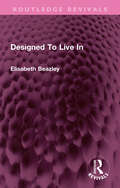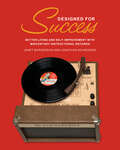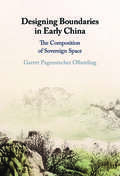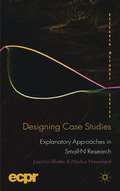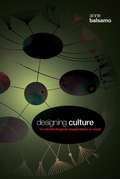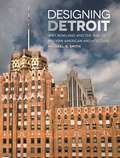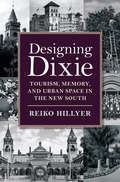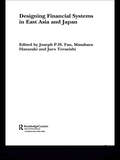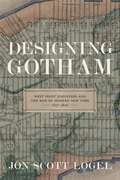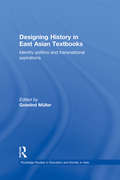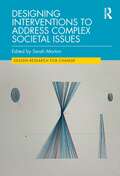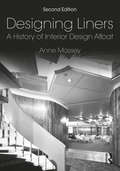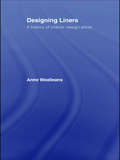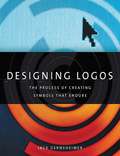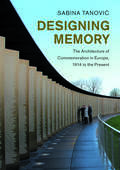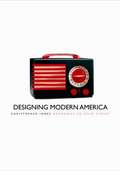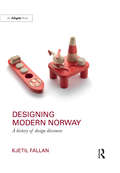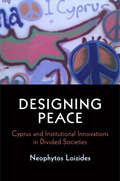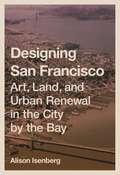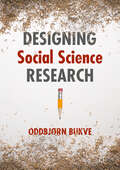- Table View
- List View
Designated Targets: A Novel of the Axis of Time (Axis of Time #2)
by John BirminghamThe Second World War was turned on its head at the moment Admiral Kolhammer’s ultra-modern stealth warships were hurled back through time from 2021. But no one could have predicted just how much of a nightmare would ensue . . . Only months after the Transition, the great powers scramble to develop the weapons of tomorrow. The year 1942 is now a world of crude jet fighters, monstrous attack helicopters, and unholy dirty bombs - a mongrel technology, born decades prematurely. Then, in a radical rewriting of history, Japanese forces sweep into Australia , foreign agents begin a campaign of terror in the USA , and Germany prepares for an all-out attack on Britain . The twenty-first-century forces must resort to the most extreme measures yet and face a future rife with possibilities - all of them apocalyptic . . . Picking up from where he left off with Weapons of Choice, John Birmingham shocks and awes us with this gripping second instalment in the Axis of Time trilogy.
Designed To Live In (Routledge Revivals)
by Elisabeth BeazleyOriginally published in 1962, this book traces the main influences behind modern design in domestic architecture. It does so against the context of the effect each new dwelling has on its environment and the effect its design has on those in the surrounding (and often older, historic) housing stock. Diverse influences such as the bye-law street and Le Corbusier’s Ville Radieuse are discussed, while the ideas bearing on the individual private house range from those of the early nineteenth century villa builders to Frank Lloyd Wright’s prairie houses and the work of Mies van der Rohe. The book closes with a detailed discussion of the problems and possibilities of domestic design in house-building in the late 20th Century
Designed for Success: Better Living and Self-Improvement with Midcentury Instructional Records
by Janet Borgerson Jonathan SchroederA charmingly illustrated history of midcentury instructional records and their untold contribution to the American narrative of self-improvement, aspiration, and success.For the midcentury Americans who wished to better their golf game through hypnosis, teach their parakeet to talk, or achieve sexual harmony in their marriage, the answers lay no further than the record player. In Designed for Success, Janet Borgerson and Jonathan Schroeder shed light on these endearingly earnest albums that contributed to a powerful American vision of personal success. Rescued from charity shops, record store cast-off bins, or forgotten boxes in attics and basements, these educational records reveal the American consumers&’ rich but sometimes surprising relationship to advertising, self-help, identity construction, and even aspects of transcendentalist thought.Relegated to obscurity and novelty, instructional records such as Secrets of Successful Varmint Calling, You Be a Disc Jockey, and How to Ski (A Living-Room Guide for Beginners) offer distinct insights into midcentury media production and consumption. Tracing the history of instructional records from the inception of the recording industry to the height of their popularity, Borgerson and Schroeder offer close readings of the abundant topics covered by &“designed for success&” records. Complemented by over a hundred full-color illustrations, Designed for Success is a wonderfully nostalgic tour that showcases the essential role these vinyl records played as an unappreciated precursor to contemporary do-it-yourself culture and modern conceptions of self-improvement.
Designing Boundaries in Early China
by Garret Pagenstecher OlberdingAncient Chinese walls, such as the Great Wall of China, were not sovereign border lines. Instead, sovereign space was zonally exerted with monarchical powers expressed gradually over an area, based on possibilities for administrative action. The dynamically shifting, ritualized articulation of early Chinese sovereignty affects the interpretation of the spatial application of state force, including its cartographic representations. In Designing Boundaries in Early China, Garret Pagenstecher Olberding draws on a wide array of source materials concerning the territorialization of space to make a compelling case for how sovereign spaces were defined and regulated in this part of the ancient world. By considering the ways sovereignty extended itself across vast expanses in early China, Olberding informs our understanding of the ancient world and the nature of modern nation-states.
Designing Brazil: Colonialism and Governance from the Portuguese Enlightenment to Brazilian Independence (1750–1825) (Latin American History in Translation)
by Jurandir MalerbaThis book presents a historical synthesis of colonial relations between Brazil and Portugal, illuminating the projects that the statesmen of the period formulated for the rich Portuguese territory in America—at first as a colonial domain, then as a potential independent country.Drawing on primary sources and historiographical dialogues with classic and current works, the book follows a chronological thread from Marquis of Pombal’s reforms to Brazilian independence. The work is framed by global geopolitics at the height of the liberal revolutions that led to the collapse of the Ancient Regime and the colonial system. Liberal revolutions, the Atlantic context, Napoleonic wars, and disputes for hegemony on the South American continent provide further background to the making of the Portuguese–American slaveholding class, the guarantor of the independence process. While the volume focuses on a remote period of history, its analysis of agendas for the nation offers the opportunity for dialogue with current concerns in Brazil.Shaping Brazil is an effective resource for understanding a long and seminal period of Brazil’s history, which will be of value to scholars of Brazilian history and Latin American history and studies more widely.
Designing Case Studies
by Joachim Blatter Markus HaverlandThe authors explore three ways of conducting causal analysis in case studies. They draw on established practices as well as on recent innovations in case study methodology and integrate these insights into coherent approaches. They highlight the core features of each approach and provide advice on each step of the research process.
Designing Culture: The Technological Imagination at Work
by Anne BalsamoThe renowned cultural theorist and media designer Anne Balsamo maintains that technology and culture are inseparable; those who engage in technological innovation are designing the cultures of the future. Designing Culture is a call for taking culture seriously in the design and development of innovative technologies. Balsamo contends that the wellspring of technological innovation is the technological imagination, a quality of mind that enables people to think with technology, to transform what is known into what is possible. She describes the technological imagination at work in several multimedia collaborations in which she was involved as a designer or developer. One of these entailed the creation of an interactive documentary for the NGO Forum held in conjunction with the UN World Conference on Women in Beijing in 1995. (That documentary is included as a DVD in Designing Culture. ) Balsamo also recounts the development of the interactive museum exhibit XFR: Experiments in the Future of Reading, created by the group RED (Research in Experimental Documents) at Xerox PARC. She speculates on what it would mean to cultivate imaginations as ingenious in creating new democratic cultural possibilities as they are in creating new kinds of technologies and digital media. Designing Culture is a manifesto for transforming educational programs and developing learning strategies adequate to the task of inspiring culturally attuned technological imaginations.
Designing Detroit: Wirt Rowland and the Rise of Modern American Architecture (Great Lakes Books Series)
by Michael G. SmithIn the early 1900s, Detroit was leading the nation in architectural innovation and designer Wirt Rowland was at the forefront of this advancement, yet few are even aware of his substantial contribution to the evolution of architectural style. It is widely believed that celebrated local architect Albert Kahn designed many of Detroit’s structures, such as the General Motors and First National Bank buildings. In fact, while Kahn’s efforts were focused on running his highly successful firm, it was Rowland, his chief designer, who was responsible for the appearance and layout of these buildings—an important point in appreciating the contributions of both Kahn and Rowland. During the early twentieth century, Rowland devised a wholly new or “modern” design for buildings, one not reliant on decorative elements copied from architecture of the past. As buildings became more specialized for their intended use, Rowland met the challenge with entirely new design methodologies and a number of improved technologies and materials that subsequently became commonplace. Designing Detroit: Wirt Rowland and the Rise of Modern American Architecture begins with a brief overview of Rowland’s early life and career. Author Michael G. Smith goes on to analyze Rowland’s achievements in building design and as a leader of Detroit’s architectural community throughout both World Wars and the Great Depression. The interdependence of architecture with the city’s fluctuating economic prosperity and population growth is explored, illuminating the conditions for good architecture and the arts in general. The author identifies the influence of Jay Hambidge’s “dynamic symmetry” in Rowland’s work and how it allowed him to employ color as a modern replacement for traditional ornamentation, leading to the revolutionary design of the Union Trust (Guardian) Building, for which he receives nearly unanimous praise in national media. This book is concerned primarily with Rowland’s influence on Detroit architecture, but spans beyond his work in Michigan to include the designer’s broad reach from New York to Miami. A comprehensive appendix includes extensive lists of Rowland’s publications, locations he had designed, and jobs taken on by his firm during his tenure. This book represents new research and insights not previously discussed in either scholarly or general audience texts and will be of interest to casual readers of Detroit history, as well as architecture historians.
Designing Dixie: Tourism, Memory, and Urban Space in the New South (The American South Series)
by Reiko HillyerAlthough many white southerners chose to memorialize the Lost Cause in the aftermath of the Civil War, boosters, entrepreneurs, and architects in southern cities believed that economic development, rather than nostalgia, would foster reconciliation between North and South. In Designing Dixie, Reiko Hillyer shows how these boosters crafted distinctive local pasts designed to promote their economic futures and to attract northern tourists and investors. Neither romanticizing the Old South nor appealing to Lost Cause ideology, promoters of New South industrialization used urban design to construct particular relationships to each city's southern, slaveholding, and Confederate pasts. Drawing on the approaches of cultural history, landscape studies, and the history of memory, Hillyer shows how the southern tourist destinations of St. Augustine, Richmond, and Atlanta deployed historical imagery to attract northern investment. St. Augustine's Spanish Renaissance Revival resorts muted the town's Confederate past and linked northern investment in the city to the tradition of imperial expansion. Richmond boasted its colonial and Revolutionary heritage, depicting its industrial development as an outgrowth of national destiny. Atlanta's use of northern architectural language displaced the southern identity of the city and substituted a narrative of long-standing allegiance to a modern industrial order. With its emphases on alternative southern pasts, architectural design, tourism, and political economy, Designing Dixie significantly revises our understandings of both southern historical memory and post-Civil War sectional reconciliation.
Designing Effective Mathematics Instruction: A Direct Instruction Approach
by Jerry Silbert Marcy Stein Douglas W. Carnine Diane B. KinderFor courses in Mathematics in Special Education. Providing teachers with the information needed to design supplemental mathematics instruction and to evaluate and modify commercially developed math programs, Designing Effective Mathematics Instruction, Fourth Edition, gives teachers systematic procedures and teaching strategies to augment instruction. The new edition discusses the history and components of the direct instruction approach to teaching mathematics, as well as relevant and current research skills and techniques required for effective mathematics instruction, including strategies for pacing lessons, correcting errors, and diagnosing and remedying error patterns. Designing Effective Mathematics Instruction also contains Instructional Sequence and Assessment Charts for primary, intermediate, and remedial teachers, which serve as diagnostic tests or as a basis for constructing goals and objectives for students.
Designing Emerging Markets: A Quantitative History of Architectural Globalisation
by Giaime BottiThis book offers a unique glance into the process of globalisation of the architectural practice during the last three decades through the lenses of innovative methodologies in architectural history based on quantitative data. Focusing on the golden age of globalisation (1990-2019), it investigates the transnational work of more than one thousand architectural firms of different business models from Europe, North America, and the Asia-Pacific in a broad sample of emerging markets: Mainland China, South-East Asia, India, the Persian Gulf, Sub-Saharan Africa, Russia and Kazakhstan, and Latin America. In the book, different thematic geographies are presented to explore the global scope of the contemporary profession, examine significant projects and the structural conditions behind them, and reveal the debates that such works generated. Understanding the global agency of design firms in emerging markets also becomes a way to study different market conditions, modes of production, and architectural trends comparatively and to highlight the shifts that occurred in the profession over the last few decades. The use of quantitative methodologies produces a novel and updated narrative on contemporary architecture in emerging markets grounded in quantitative data rather than in preassumptions and purely qualitative interpretations. Richly illustrated, this book is further enhanced by an ample set of maps, graphs, and tables to visualise data better.
Designing Financial Systems for East Asia and Japan (Routledge Studies in the Growth Economies of Asia #Vol. 52)
by Masaharu Hanazaki Joseph P.H. Fan Juro TeranishiThis book deliberates on some urgent issues that face the new architecture of the financial systems in Japan and East Asia. The book is broken into three sections:*The role of financial institutions and markets in economic development in Japan and East Asia*Issues in corporate governance and new technologies*The designing of efficient financial systemsWith contributions from leading Asian economics experts based around the world, this book will be useful to both scholars and professionals with an interest in financial systems, corporate financing and governance.
Designing Gotham: West Point Engineers and the Rise of Modern New York, 1817-1898 (Conflicting Worlds: New Dimensions of the American Civil War)
by Jon Scott LogelBetween 1817 and 1898, New York City evolved from a vital Atlantic port of trade to the center of American commerce and culture. With this rapid commercial growth and cultural development, New York came to epitomize a nineteenth-century metropolis. Although this important urban transformation is well documented, the critical role of select Union soldiers turned New York engineers has, until now, remained largely unexplored. In Designing Gotham, Jon Scott Logel examines the fascinating careers of George S. Greene, Egbert L. Viele, John Newton, Henry Warner Slocum, and Fitz John Porter, all of whom studied engineering at West Point, served in the United States Army during the Civil War, and later advanced their civilian careers and status through the creation of Victorian New York.These influential cadets trained at West Point in the nation’s first engineering school, a program designed by Sylvanus Thayer and Dennis Hart Mahan that would shape civil engineering in New York and beyond. After the war, these industrious professionals leveraged their education and military experience to wield significant influence during New York’s social, economic, and political transformation. Logel examines how each engineer’s Civil War service shaped his contributions to postwar activities in the city, including the construction of the Croton Aqueduct, the creation of Central Park, and the building of the Brooklyn Bridge. Logel also delves into the administration of New York’s municipal departments, in which Military Academy alumni interacted with New York elites, politicians, and civilian-trained engineers. Examining the West Pointers’ experiences—as cadets, military officers during the war, and New Yorkers—Logel assesses how these men impacted the growing metropolis, the rise of professionalization, and the advent of Progressivism at the end of the century.
Designing History in East Asian Textbooks: Identity Politics and Transnational Aspirations (Routledge Studies in Education and Society in Asia)
by Gotelind MüllerThis book analyses the efforts throughout East Asia to deploy education for purposes of political socialization, and in particular in order to shape notions of identity. The chapters also examine the trend of ‘common textbook initiatives’, which have recently emerged in East Asia with the aim of helping to defuse tensions arguably fuelled by existing practices of mutual (mis)representation. These are analysed in relation to the East Asian political context, and compared with previous and ongoing endeavours in other parts of the world, particularly Europe, which have been keenly observed by East Asian practitioners. Written by a group of international education experts, chapters discuss the enduring focus on the role of curricula in inculcating homogenous visions of the national self, and indeed homogenized visions of significant 'others'. Including contributions from scholars and curriculum developers involved personally in the writing of national and multi-national history textbooks this book will be of interest to students and scholars of Asian education, Asian history and comparative education studies. Gotelind Müller is Professor of Chinese Studies, University of Heidelberg, Germany
Designing Human Practices: An Experiment with Synthetic Biology
by Paul Rabinow Gaymon BennettIn 2006 anthropologists Paul Rabinow and Gaymon Bennett set out to rethink the role that human sciences play in biological research, creating the Human Practices division of the Synthetic Biology Engineering Research Center—a facility established to create design standards for the engineering of new enzymes, genetic circuits, cells, and other biological entities—to formulate a new approach to the ethical, security, and philosophical considerations of controversial biological work. They sought not simply to act as watchdogs but to integrate the biosciences with their own discipline in a more fundamentally interdependent way, inventing a new, dynamic, and experimental anthropology that they could bring to bear on the center’s biological research.Designing Human Practices is a detailed account of this anthropological experiment and, ultimately, its rejection. It provides new insights into the possibilities and limitations of collaboration, and diagnoses the micro-politics which effectively constrained the potential for mutual scientific flourishing. Synthesizing multiple disciplines, including biology, genetics, anthropology, and philosophy, alongside a thorough examination of funding entities such as the National Science Foundation, Designing Human Practices pushes the social study of science into new and provocative territory, utilizing a real-world experience as a springboard for timely reflections on how the human and life sciences can and should transform each other.
Designing Interventions to Address Complex Societal Issues (Design Research for Change)
by Sarah MortonThis edited volume is about the application of design-led approaches for developing interventions that have the intention of addressing real-world issues and problems. The book documents the realities of developing and designing interventions for real people, in a real-world context. The topics covered in the book are multi-disciplinary, and include examples from health and wellbeing, education, and agriculture. The contributors provide open and honest accounts of the challenges and restrictions, highlighting the positive impact that can be gained from involving stakeholders as key voices in the intervention development process. These case studies suggest underpinning methodologies that will support the formalisation of these design-led approaches, permitting the formation of robust frameworks in the future. The book will be of interest to scholars working in design, design research, intervention design, co-design, user-centred design, service design, digital design, digital healthcare, and evidence-based design.
Designing Liners: A History of Interior Design Afloat
by Anne MasseyDesigning Liners: A History of Interior Design Afloat covers the interior design of these floating palaces from the mid-nineteenth century to the twenty-first century. In this new edition, the design heritage of the ocean liner is also explored in this age of a growing holiday cruise market. The book offers the first history and analysis of this highly significant aspect of the design of interiors, which mirrors and reinforces cultural assumptions about national identity, gender, class and ethnicity. The interiors of ocean liners reflect the changing hierarchies of society and shifting patterns of globalization. The trajectory of the professionalization of interior design is the connecting narrative of the book, from the local decorating firm to the internationally renowned architect. It is an important addition to interior design research and takes this transitory building type as its subject. This book provides the first survey of the transient history of interior design in relation to the development of passenger shipping. The history of these great ship interiors is tracked, from their commissioning by the line owners; the materials, methods and sources for the initial creation; their construction; their use and reception. The demise and re-purposing of the interiors is also covered in this new edition, with additional material on the South African Union Castle and P & O lines. Drawing on a broad range of original research, Anne Massey’s approach combines interior design studies, design history, architectural history and maritime studies. The new edition has been carefully designed to include black and white and colour illustrations.
Designing Liners: A History of Interior Design Afloat
by Anne WealleansThis in-depth history of the interior design of ocean liners surveys the transient history of interior design in relation to the development of passenger shipping, from commissioning by the line owners, methods and sources for the original creation of designs through to its construction, use and influence. It is a short-lived branch of architecture and design, lasting an average of fifteen years. As the design and taste mirrors and reinforces cultural assumptions about national identity, gender, class and race, not only did the interiors of ocean going liners reflect the changing hierarchies of society and shifting patterns in globalization, but the glamour and styling of the liners were reflected back into the design of interiors on land. Combining design history, architecture history, material and visual cultures, Designing Liners is a richly multidisciplinary work for those studying or researching this application of interior design.
Designing Logos: The Process of Creating Symbols That Endure
by Jack GernsheimerHow to design great logos, step by step by step. * Lavishly illustrated with 750 color images * How-tos, case studies, and detailed analysis of well-known logos What makes a logo good? What makes it bad? What makes it great? The entire process of logo design is examined, from the initial client interview to brainstorming, from first presentation to delivery of the final standards manual. Through 750 color illustrations, classic logos are analyzed, and readers will learn a thirteen-point system for measuring the effectiveness of any logo. Learn about the uses of positive and negative space, balance, color, and typography; follow intriguing case studies; discover how to make effective presentations to clients. Designers, marketing and branding specialists, educators, and students everywhere need this definitive guide to creating great logos.
Designing Memory: The Architecture of Commemoration in Europe, 1914 to the Present (Studies in the Social and Cultural History of Modern Warfare)
by Sabina TanovićThis innovative study of memorial architecture investigates how design can translate memories of human loss into tangible structures, creating spaces for remembering. Using approaches from history, psychology, anthropology and sociology, Sabina Tanović explores purposes behind creating contemporary memorials in a given location, their translation into architectural concepts, their materialisation in the face of social and political challenges, and their influence on the transmission of memory. Covering the period from the First World War to the present, she looks at memorials such as the Holocaust museums in Mechelen and Drancy, as well as memorials for the victims of terrorist attacks, to unravel the private and public role of memorial architecture and the possibilities of architecture as a form of agency in remembering and dealing with a difficult past. The result is a distinctive contribution to the literature on history and memory, and on architecture as a link to the past.
Designing Modern America: Broadway to Main Street
by Christopher InnesFrom the 1920s through the 1950s, two individuals, Joseph Urban and Norman Bel Geddes, did more, by far, to create the image of "America" and make it synonymous with modernity than any of their contemporaries. Urban and Bel Geddes were leading Broadway stage designers and directors who turned their prodigious talents to other projects, becoming mavericks first in industrial design and then in commercial design, fashion, architecture, and more. The two men gave shape to the most quintessential symbols of the modern American lifestyle, including movies, cars, department stores, and nightclubs, along with private homes, kitchens, stoves, fridges, magazines, and numerous household furnishings. Illustrated with more than 130 photographs of their influential designs, this book tells the engrossing story of Urban and Bel Geddes. Christopher Innes shows how these two men with a background in theater lent dramatic flair to everything they designed and how this theatricality gave the distinctive modernity they created such wide appeal. If the American lifestyle has been much imitated across the globe over the past fifty years, says Innes, it is due in large measure to the designs of Urban and Bel Geddes. Together they were responsible for creating what has been called the "Golden Age" of American culture.
Designing Modern Norway: A History of Design Discourse
by Kjetil FallanDesigning Modern Norway: A History of Design Discourse is an intellectual history of design and its role in configuring the modern Norwegian nation state. Rather than a conventional national design history survey that focuses on designers and objects, this is an in-depth study of the ideologies, organizations, strategies and politics that combined might be said to have "designed" the modern nation's material and visual culture. The book analyses main tropes and threads in the design discourse generated around key institutions such as museums, organisations and magazines. Beginning with how British and continental design reform ideas were mediated in Norway and merged with a nationalist sentiment in the late nineteenth century, Designing Modern Norway traces the tireless and wide-ranging work undertaken by enthusiastic and highly committed design professionals throughout the twentieth century to simultaneously modernise the nation by design and to nationalise modern design. Bringing the discussion up towards the present, the book concludes with an examination of how Norway's new-found wealth has profoundly changed the production, mediation and consumption of design.
Designing Peace: Cyprus and Institutional Innovations in Divided Societies (National and Ethnic Conflict in the 21st Century)
by Neophytos LoizidesWhy do some societies choose to adopt federal settlements in the face of acute ethnic conflict, while others do not? Neophytos Loizides examines how acrimoniously divided Cyprus could re-unify by adopting a federal and consociational arrangement inspiring similar attempts in its region.Loizides asserts that institutional innovation is key in designing peace processes. Analyzing power-sharing in Northern Ireland, the return of displaced persons in Bosnia, and the preparatory mandate referendum in South Africa, he shows how divided societies have implemented novel solutions despite conditions that initially seemed prohibitive. Turning to Cyprus, he chronicles the breakthrough that led to the exhumations of the missing after 2003, and observes that a society's choice of narratives and institutions can overcome structural constraints. While Loizides points to the relative absence of successful federal and consociational arrangements among societies evolving from the "post-Ottoman space," he argues that neither elites nor broader societies in the region must be held hostages to the past.To effect lasting and positive change, Loizides encourages stakeholders in divided societies to be prepared to identify, redesign, and implement innovative new institutions. Examining successful peace mediations and identifying the shared experience and commonalities between Cyprus and other divided societies promises not only to inform the tackling of the Cyprus problem but also to provide transferable knowledge with broader implications for the fields of peace studies and conflict resolution.
Designing San Francisco: Art, Land, and Urban Renewal in the City by the Bay
by Alison IsenbergA major new urban history of the design and development of postwar San FranciscoDesigning San Francisco is the untold story of the formative postwar decades when U.S. cities took their modern shape amid clashing visions of the future. In this pathbreaking and richly illustrated book, Alison Isenberg shifts the focus from architects and city planners—those most often hailed in histories of urban development and design—to the unsung artists, activists, and others who played pivotal roles in rebuilding San Francisco between the 1940s and the 1970s.Previous accounts of midcentury urban renewal have focused on the opposing terms set down by Robert Moses and Jane Jacobs—put simply, development versus preservation—and have followed New York City models. Now Isenberg turns our attention west to colorful, pioneering, and contentious San Francisco, where unexpectedly fierce battles were waged over iconic private and public projects like Ghirardelli Square, Golden Gateway, and the Transamerica Pyramid.When large-scale redevelopment came to low-rise San Francisco in the 1950s, the resulting rivalries and conflicts sparked the proliferation of numerous allied arts fields and their professionals, including architectural model makers, real estate publicists, graphic designers, photographers, property managers, builders, sculptors, public-interest lawyers, alternative press writers, and preservationists. Isenberg explores how these centrally engaged arts professionals brought new ideas to city, regional, and national planning and shaped novel projects across urban, suburban, and rural borders. San Francisco’s rebuilding galvanized far-reaching critiques of the inequitable competition for scarce urban land, and propelled debates over responsible public land stewardship. Isenberg challenges many truisms of this renewal era—especially the presumed male domination of postwar urban design, showing how women collaborated in city building long before feminism’s impact in the 1970s.An evocative portrait of one of the world’s great cities, Designing San Francisco provides a new paradigm for understanding past and present struggles to define the urban future.
Designing Social Science Research
by Oddbjørn BukveThis book presents different research designs, their respective purposes and merits as well as their underlying assumptions. Research designs are characterised by a certain combination of knowledge aims and strategies for data production. An adequate design is the key to carrying out a successful research project. Nevertheless, the literature on design is scarce, compared to the literature on methods. This book clarifies the basic distinction between variable-oriented designs and case designs, and proceeds to integrated, comparative and intervention-oriented designs. A step-by-step guide to the design process and the choices to make is also included. The book's clear style makes it an excellent guide for master students and PhD students doing their first research exercises, while it is also useful for more experienced researchers who want to broaden their design repertoire and keep up to recent innovations in the field of research design.

